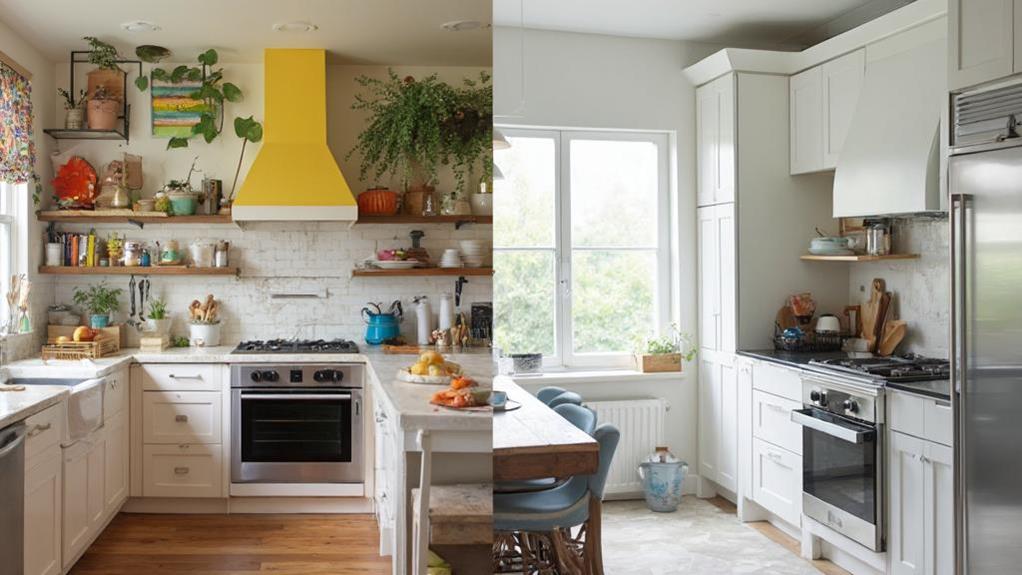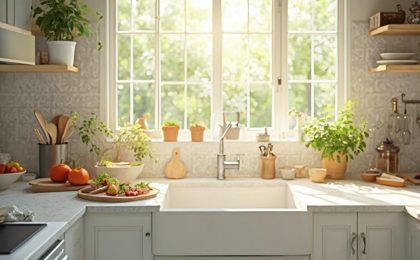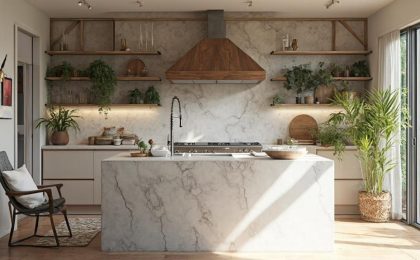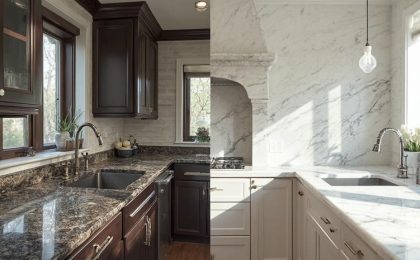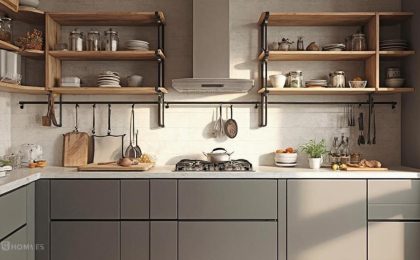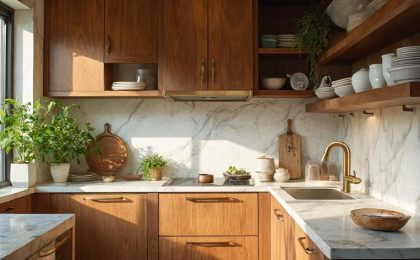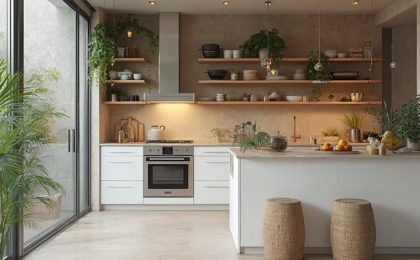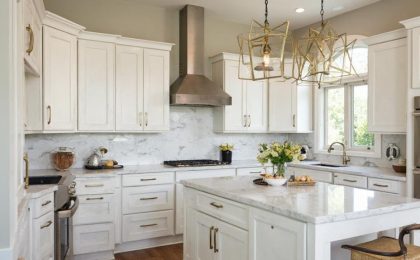When you’re considering a kitchen renovation, the choice between DIY and hiring a professional can feel overwhelming. You might think about your budget, skills, and the time you can invest, but have you truly assessed the potential risks and challenges each option presents? While DIY can save you money, it often leads to unexpected complications without the right experience. On the other hand, professional fitting guarantees quality but comes at a cost. Understanding what matters most to you can clarify your decision—and it might just surprise you what you learn as you weigh the pros and cons.
Key insights
- Assess your budget carefully, considering both initial costs and potential long-term savings with professional fitting.
- Evaluate your skills and experience to determine if you can handle complex tasks required for a DIY project.
- Consider the time commitment needed for DIY versus the quicker completion offered by hiring professionals.
- Focus on quality and finish expectations, as professionals ensure higher craftsmanship standards compared to DIY efforts.
- Weigh the long-term value and maintenance implications, as professional installations can enhance resale value and reduce future repair costs.
Understanding Your Budget
When diving into a kitchen fitting project, understanding your budget is vital for a successful outcome. First, you need to define your budget constraints clearly. Determine how much you can afford to spend, keeping in mind that kitchen fittings can vary greatly in price.
It’s wise to create a detailed list of your desired materials, appliances, and any additional features you want to include. Professional kitchen fitters, like those in Sheffield, can help you navigate transparent, detailed quotes to avoid unexpected costs.
Next, factor in unexpected expenses. Even with careful planning, surprises can arise, like needing extra materials or dealing with hidden issues like plumbing or electrical work. To safeguard against this, consider allocating an extra 10-20% of your budget for these unforeseen costs. This cushion will help you avoid financial stress as your project progresses.
Additionally, don’t forget to include labor costs if you’re hiring professionals or any tools you might need if you’re going the DIY route.
Assessing Your Skills
Evaluating your skills is crucial before starting a kitchen fitting project, as it helps determine whether you should tackle the job yourself or hire a professional.
Start by taking an honest inventory of your abilities. Do you have experience with plumbing, electrical work, or carpentry? If not, those tasks might be best left to an expert. Additionally, consider the complexity of the tile installation process; hiring professional tile fitters can guarantee high-quality finishes and compliance with local regulations.
Next, consider your tool selection strategies. Do you own the necessary tools, like a drill, saw, or level? If you need to purchase or rent tools, factor that into your budget. Having the right equipment can make or break your success in a DIY project.
Don’t forget about workspace preparation tips. Confirm you have a clean, organized area to work in. Clear out any clutter and make room for materials and tools.
A well-prepared workspace not only boosts efficiency but also helps prevent accidents.
Time Commitment Considerations
A significant time commitment is essential for a successful kitchen fitting project, whether you’re going the DIY route or hiring professionals.
If you choose to tackle the project yourself, be prepared for a substantial time investment. You’ll need to dedicate hours for planning, shopping for materials, and executing the installation. This can stretch over several weekends or even weeks, depending on your skill level and the complexity of the job.
Additionally, reflect on the potential learning curve involved in DIY fitting, as understanding contemporary and traditional design trends can greatly impact your project’s outcome, much like the expertise of skilled fitters.
On the other hand, hiring professionals offers a different kind of time commitment. While they’ll handle the heavy lifting, you still need to contemplate scheduling flexibility. You’ll have to coordinate with their availability, which may involve waiting for your chosen fitters to slot you into their calendar. This could potentially lead to delays in completing your kitchen.
Ultimately, think about how much time you can realistically devote to the project. If you have a busy schedule, a professional service might save you time in the long run.
However, if you’re enthusiastic to roll up your sleeves and learn, a DIY approach might be more fulfilling, even if it requires a significant time investment.
Quality and Finish Expectations
Achieving high-quality finishes in your kitchen fitting can make a significant difference in both aesthetics and functionality. When you opt for a professional kitchen fitter, you’re not just hiring a set of hands; you’re investing in craftsmanship standards that guarantee every detail is addressed.
Professionals are trained to work with various material choices, from cabinets to countertops, allowing for a finish that meets your expectations and stands the test of time.
On the other hand, if you choose to go the DIY route, be prepared to carefully consider your skill level and the quality of materials you select. While you might save money initially, subpar craftsmanship can lead to issues down the line, such as uneven surfaces or poorly installed fixtures.
This could affect not only the appearance of your kitchen but also its functionality.
Ultimately, think about whether you have the time, expertise, and resources to achieve the same level of quality as a professional. If you’re aiming for a polished look and durable results, a professional kitchen fitter might be the best choice for you.
Design and Customization Options
When it comes to kitchen fitting, design and customization options can greatly influence the overall look and feel of your space.
Whether you’re opting for a DIY project or hiring a professional, you’ll want to contemplate several key aspects:
- Color schemes: Choose hues that complement your home and reflect your personality.
- Layout trends: Stay updated on the latest layouts that maximize both functionality and aesthetics.
- Appliance selection: Select appliances that not only fit your needs but also harmonize with your design.
You’ll also want to think about ergonomic design, ensuring that your kitchen flows smoothly for everyday tasks.
Custom storage solutions can help you make the most of your space, allowing easy access to essentials while keeping everything organized.
Material choices play a significant role too; from countertops to cabinetry, the right materials can elevate your kitchen’s style and durability.
Potential Risks and Challenges
Starting a kitchen fitting project, whether DIY or professional, comes with its share of potential risks and challenges. If you choose the DIY route, you might encounter safety concerns, especially when handling heavy materials or using power tools. It’s vital to have the right safety gear and knowledge to prevent accidents. On the other hand, hiring professionals doesn’t eliminate risks; you could still face unexpected expenses if the project goes over budget.
Here’s a quick overview of the risks involved in both options:
| Aspect | DIY Fitting | Professional Fitting |
|---|---|---|
| Safety Concerns | High, if untrained | Moderate, depends on crew |
| Skill Level | Requires significant skill | Generally skilled professionals |
| Unexpected Expenses | Often underestimated | Possible, if not clearly outlined |
Understanding these risks is essential before diving in. If you’re unsure about your skills, consider the potential drawbacks of the DIY approach. Weigh them against the assurance of hiring a professional to mitigate these challenges and enhance your kitchen fitting experience.
Long-term Value and Maintenance
Investing in your kitchen’s long-term value and maintenance is vital, no matter which fitting option you choose. A well-fitted kitchen can greatly impact your home’s resale value, while poor craftsmanship may lead to costly repairs down the line.
Here are some key considerations to keep in mind:
- Quality Materials: Investing in durable materials can reduce future maintenance costs.
- Professional Installation: Hiring professionals often guarantees a higher standard of work, minimizing issues later.
- Regular Upkeep: Routine maintenance can extend the lifespan of your kitchen features.
When you opt for DIY, it’s important to assess your skills honestly. A poorly executed installation can lead to problems that not only affect your kitchen’s functionality but also diminish its value.
On the other hand, professional fitting typically comes with a guarantee, providing peace of mind and potentially saving you money on future repairs.
Ultimately, whether you choose DIY or professional fitting, consider how your decisions today will affect your kitchen’s longevity and resale value in the future.
Investing wisely now can pay off greatly when it’s time to sell your home.
Frequently Asked Questions
How Does Kitchen Size Affect My Fitting Options?
Your kitchen size greatly impacts your fitting options. A smaller kitchen may require clever space optimization to make the most of every square foot, while a larger kitchen allows for more flexibility in your kitchen layout.
You’ll need to evaluate how to arrange cabinets and appliances to enhance functionality and flow. Whether you choose a compact design or an open layout, remember that maximizing space can elevate your cooking experience.
Can I Mix DIY and Professional Services for My Kitchen?
Absolutely, you can mix DIY and professional services for your kitchen.
It allows you to balance budget considerations while still achieving your design preferences. For instance, you might handle simple tasks like painting or installing cabinets, then hire a pro for plumbing or electrical work.
This approach not only saves money but also guarantees that critical aspects are done right, giving you a personalized space that reflects your style and meets your needs.
What Materials Are Best for DIY Kitchen Fittings?
When you’re considering materials for DIY kitchen fittings, think about your budget considerations and material durability.
Plywood or MDF is often a cost-effective choice for cabinets, while solid wood adds longevity but can be pricier.
For countertops, laminate offers affordability, but quartz or granite brings lasting strength and aesthetic appeal.
Don’t forget about easy-to-install options like peel-and-stick backsplash tiles.
Choosing wisely guarantees your kitchen looks great and stands the test of time.
Are There Specific Tools Required for Kitchen Fitting Projects?
For kitchen fitting projects, you’ll need several essential tools to get the job done right. A tape measure, level, and drill are fundamental for accurate measurements and installation.
Don’t forget a saw for cutting materials and screwdrivers for assembly. Tool safety is critical, so always wear protective gear, like gloves and goggles.
Having the right tools not only makes your work easier but also guarantees a professional-looking finish in your kitchen renovation.
How Do I Choose the Right Contractor for Professional Fitting?
Choosing the right contractor for your kitchen fitting is essential.
Start by checking contractor qualifications, ensuring they’ve the necessary licenses and experience. Look for reviews or past projects to gauge their reliability.
Discuss project timelines upfront; a good contractor should provide a clear schedule.
Don’t hesitate to ask questions about their process and materials.
With the right research, you’ll find someone who meets your needs and can bring your kitchen vision to life.
Summary
Ultimately, choosing between DIY and professional kitchen fitting comes down to your unique situation. If you’ve got the skills, time, and a clear budget, DIY can be rewarding and economical. However, if you’re after high-quality craftsmanship and a hassle-free experience, hiring a professional might be your best bet. Consider your priorities, and remember that investing in your kitchen is an investment in your home’s long-term value. Make the choice that aligns with your goals and enjoy the transformation!
